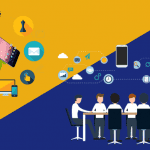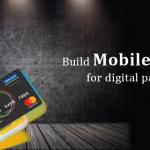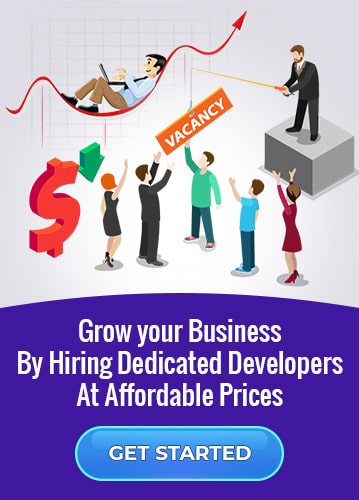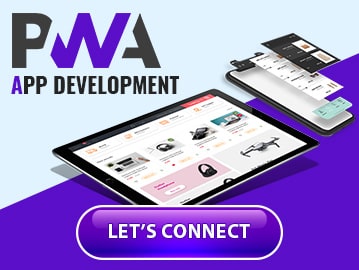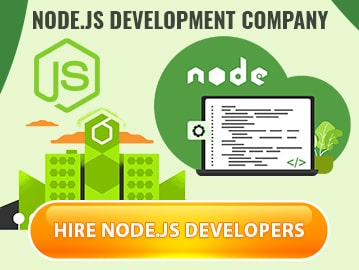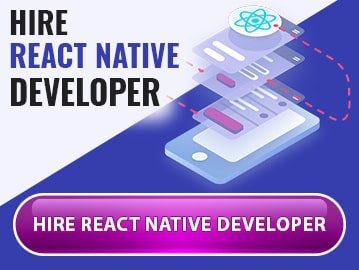How Augmented Reality and Virtual Reality are Transforming the Enterprises
Written by Hemendra Singh on May 23, 2018 | Updated on: August 30, 2019

‘Technology’ the word in itself covers an unimaginable and unexpected plethora of innovations. The rise in the emerging technology brings a pressure or should we say an urge of competition among the enterprises, startups, and entrepreneurs.
A recent buzz created in the market, with the development in the Augmented Reality and Virtual Reality. Being in the primary stage of development, we yet can’t estimate the real abilities of the AR and VR as we are mostly using the technologies for entertainment purposes.
It is true to say that, AR has the ability to take the consumer experience to the next-level and it is believed that the AR market will grow to USD 80.9 billion by 2022 from USD 2.6 billion in 2016.
In the recent years, enterprises are showing an inclination towards incorporating these technologies into the products, services and even into their work environment. Far away from the consumer entertainment perspective, a momentum is slowly building in the big companies for AR and VR.
They are testing and implementing these immersive technologies into more of work-related applications and enhancing their capabilities and GAge of the services.
Table of Contents
AR and VR applications benefits for the Enterprises:
- Streamline the work process
- Enhances the productivity
- Detection and prevention of errors before they occur
- Cross-geographic collaboration
- Real-time analysis of the data
- Improve the decision-making power and outcomes
- Saves development time and reduces development cost
How AR and VR are infiltrating the enterprises?
Augmented Reality and Virtual Reality Transforming the Enterprises
Enterprises are benefiting from their use cases like to avoid collision issues by designing machinery in a collaborative VR space. By using these cases, companies are exploring opportunities for the mixed reality to implement within the companies.
Some of the areas where they are working to implement benefit the employees, consumers, and Company’s productivity are B2B Sales, Theft Protection, Real-time Information Overlay, Entertainment, and Marketing, etc.
-
Guidance and Collaboration:
The most promising advantage of AR and VR in the industries are that they are becoming a helping hand or guide on demand to the employees. Especially, when we talk about the workers those who are working in the factories are greatly benefitted by these technologies.
It may sound like a science fiction movie, but yes smart glasses or head-mounted displays can help workers to perform manual tasks. It may be like repairing heavy types of machinery parts or fine instruments.
The AR/VR enabled devices can provide instructions, map, parts name and even the real-time feedback to the worker. Thus, helping them to perform with high precision. Furthermore, you can remotely access and guide your colleague who is working on high technicality issues to troubleshoot the problem.
The most prominent sectors where you can see the use of guidance and collaboration applications are aerospace, discrete manufacturing, nuclear sectors, oil and gas industries, etc.
Companies are using these technologies in order to reduce the risk factors for injury, error, etc that are associated while working there. Apart from this, it also enhances the productivity and accuracy of the work.
Example: Boeing engineers use smart glasses rather than a manual guide to install wiring, thus increasing the production time by 25%.
-
Implementing AR and VR to Increase the Consumer Experience:
There is no doubt in the fact that, today’s market is the consumer-dominated market. From designing a product to advertising to selling it, everything revolves around how better you present your products.
Businesses have been seeing adopting emerging technologies in the market to grab the attention of their customers. For the same reason, they are trying their hands on AR and VR.
The applications based on these technologies allow a better interaction with the product. Let’s say for an example, you can visualize how the centre table will look like in your dining space.
Sectors like banking, automotive, retail, travel, consumer products, and hospitality are using AR/VR to increase their customers’ experiences.
If we talk about the advantages that these technologies are offering to these sectors, then we may see that there is a sudden hike in the revenue, brand positioning, advertisement, affecting marketing, and fewer bad response of the product.
Example: Real-Estate companies are opting for the Augmented Reality and Virtual Reality app development applications for offering a better property view. A customer can explore either the built or planned project from various angles.
Recently, AR technology was implemented at the Seoul Incheon Airport to guide the traveller smartly. It guides them from the airport to the Pyeongchang with the help of AR application which shows directions and notifications.
-
Learning and Training:
AR/VR applications are making their way in the education and training sector too. Companies are using these technologies to train their employees for the extreme situations by creating a havoc environment for them.
Furthermore, these applications find a great place in the medical sector as well. Doctors can perform virtual heart surgeries and thus reduces any probable risk in real time. Also, people suffering from PTSD (Post-Traumatic Stress Disorder) can comfort by teaching them to manage their stress.
For, most of these applications, it is required to wear a headset for completely immerge into that environment.
Example: To help the patients of PTSD, University of Southern California are researching more on these technologies to identify methods to provide relief to the patients.
-
Engineering Design and Analysis:
Companies are moving ahead to incorporate AR / VR into their work culture by using the applications to enhance the productivity, development time, and reduce cost.
Designers are using a headset to plan, model, design and test the products in real-time simulation. Company domains like Automobile manufacturers, Aerospace, Real-Estate, Semiconductor IC manufacturer, etc.
AR/VR also provides an ability for the companies to analyze the data by visualizing the trends and manipulate the complex data to see the outcomes. Moreover, many banking sectors are using data visualizations to enhance the novel methods that can help customers better.
Sectors like Education, Banking, finance, and investment, etc are using this application to manage and plan their strategies.
Example: NASA is using the immersive technologies to design the upcoming Mars Rover.
-
Guiding New Employee or Visitors:
Keeping in the mind the awkwardness that a newbie faces on the first day of the office, Augmented Reality app developers came up with an idea to develop an application that guides the new employee through the Company premises.
It can guide you about the seating arrangements, telling you about the designated person details about name, hobbies, role in the Company, etc.
The plus point of this application is that it will tell the employee about the Company’s work. Also, what are their methodologies of doing a work, the location of the departments?
Example: Beam, a design and digital marketing agency have implemented an AR-based headset. This app guides the employee to the whole premises of the Company.
Challenges of AR and VR applications:
Although these immersive technologies are providing great experiences to the users and companies, still they have a long way ahead in becoming the most reliable technology. The following are the key challenges that are the hurdle to a virtual future:
-
Cost of Devices and Apps:
The VR headset is a bit quite expensive to buy. A normal HTC Vive and Oculus Rift cost $799 and $599, respectively. Moreover, the headset is tethered to the computer devices, that means, your computer should be capable of running high-end VR software.
Thus, to run VR headset, you require VR software which adds to the cost of using the technology.
-
Universal Standards:
AR and VR will need to follow the universal standards to develop the applications. These applications will be capable enough to work or operate on the multiple headsets. If we talk about VR alone, then currently it is lacking in simple plug-and-play capabilities.
-
User Experience:
The manufacturers need to understand the fact that one size (head size) does not fit all. They need to come up with the adjustable headsets. Also, VR headsets make the user stationary at one place while bearing 500 grams of weight.
To recapitulate
It is always good and refreshing to incorporate latest trends and technologies into our work environment. This enhances our productivity and efficiency in improving GAge of the resources. To offer best services and products to the customers, it requires an immense amount of hard work and knowledge.
AR and VR offer broad benefits to the enterprises from healthcare sectors to aerospace sectors. The ongoing improvements in the performances are broadening the capabilities and opportunities of the applications based on AR and VR.
Seeing the above ways that are creeping into the enterprises, we think it is the right time for the strategists, marketing managers, operation leaders, and mobile app developers to make greater applications that are helpful for humankind.
Moreover, enterprises can hire a mobile app development Company to develop an AR/VR based application for them to enhance their quality of services and products.
My name is Hemendra Singh. I am Managing Director and co-founder of PuzzleInnovationz, a Mobile App Development Company. I am having a keen interest in the latest trends and technologies that are emerging in different domains. Being an entrepreneur in the field of IT sector, it becomes my responsibility to aid my audience with the knowledge of latest trends in the market.
![Oracle Database Advantages, Disadvantages and Features [Guide 2021]](../wp-content/uploads/2019/08/Oracle-Database-Advantages-Disadvantages-150x150.jpg)

